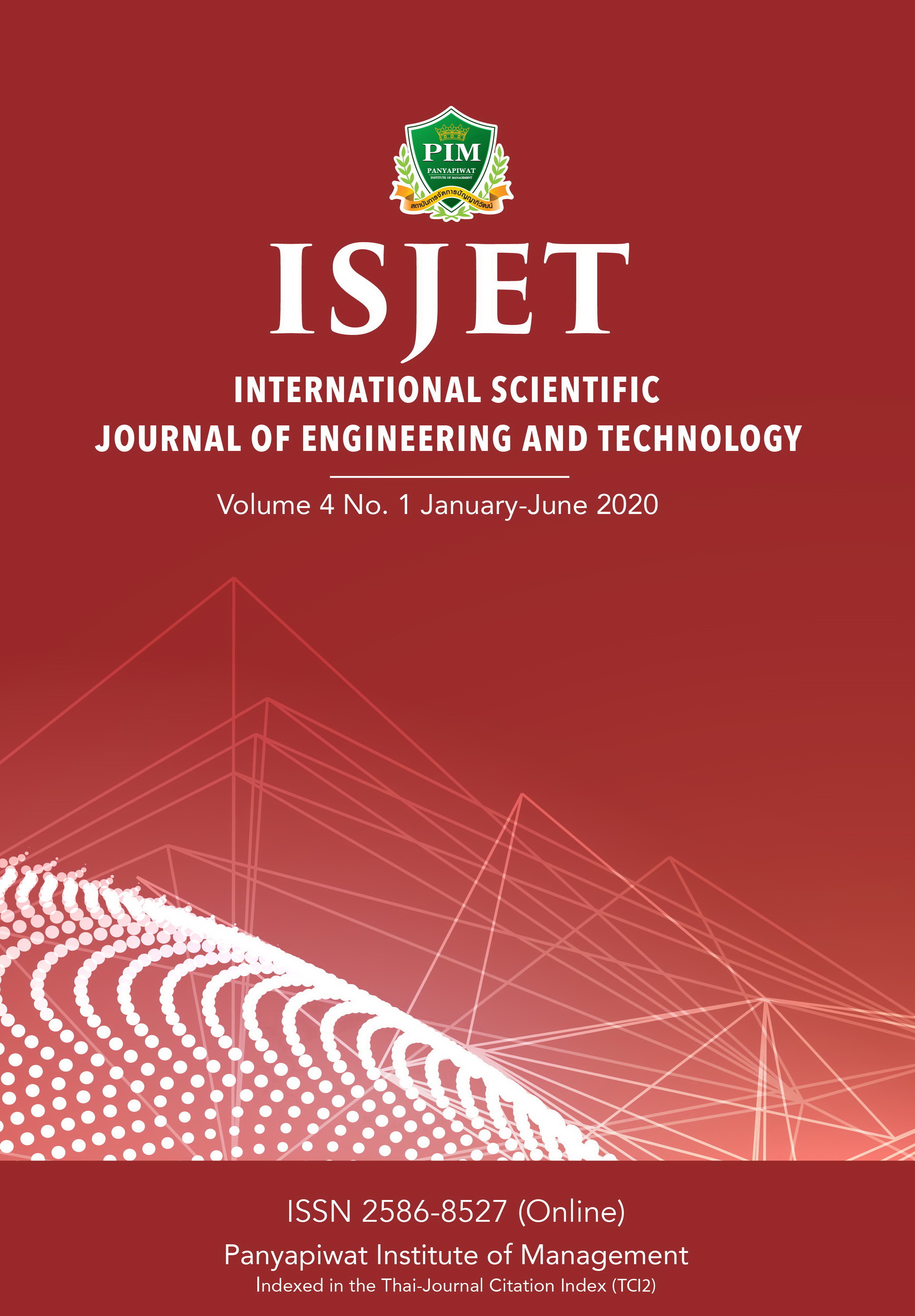Effect of Fermented of Boiled Organic Soybean in Diet on Carcass Composition and Meat Quality of Boiler Chickens
Main Article Content
Abstract
This research aimed to investigate effects of fermented of boiled organic soybean in diets on carcass composition and meat quality of boiler chickens. Two hundred-thirty four of commercial boiler chickens about one day aged, each was used. It is separated into 6 groups, 3 replications (n=13) were contained control diet, control diet replaced with boiled organic soybean and boiled organic soybean diet replaced with fermented of boiled organic soybean at 25, 50, 75 and 100% respectively. The results found that the each fermented of boiled organic soybean in diets cause decreased percentage of hot carcass, dressing, loins and tender loins (P<0.05). Therefore, the used of fermented of boiled organic soybean in diets also affects to the pH, color and shear force of the meat(P<0.05).
Article Details
เนื้อหาข้อมูล
References
Department of Livestock. Free-range Chicken, Free-range Chicken. Bureau of Animal Husbandry and Genetic Improvement. Bangkok, 2010, pp. 16.
Anonymous, “Production yield of soybean with planted after harvest rice.” Technologychaoban, Bangkok: Thailand, Matichon Publisher, 2018, pp. 8.
V. Poysa, and L. Woodrow, “Stability of soybean seed composition and its effect on soymilk and tofu yield and quality,” Journal of Food Research International, vol. 35, no. 4, pp 337–345, 2002.
A. Waranyuwat. “Nutritional of Soybean” in Soybean, Peanut and Castor: 1st ed., Chothiwong Publisher, Bangkok, 2001, pp. 177.
A. Pulpakdee, “Soybean” in Gold Plant of Thailand. Kasetsart University Publisher, Bangkok Thailand. 2003, pp.150.
F. Barrows, D. Stone, and R. Hardy, “The effects of extrusion conditions on the nutritional value of soybean meal for rainbow trout (Oncorhynchus mykiss),” Aquaculture, vol. 265, no. 1- 4, pp. 244-252, May. 2007.
G. Francis, H. P. Makkar, and K. Becker, “Anti-nutritional factors present in plant-derived alternate fish feed ingredients and their effects in fish”. Aquaculture, vol. 199, no. 3 - 4, pp. 197-227, Aug. 2001.
Y. Velasquez, C Kijora, E. Wedler, and J. Danier, “Fermentation properties and nutritional quality of selected aquatic macrophytes as alternative fish feed in rural areas of the Neotropics,” Livestock Research for Rural Development. vol. 23, no. 11, pp. 239-246, Nov. 2011.
Y. Inatsu, N. Nakamura, Y. Yuriko et al., “Charaterization of Bacillus Subtilis strains in Thuanao, a traditional fermented soybean food in northern Thailand,” Journal of Applied Microbiology. vol. 43, no. 3, pp. 237-242, Sep. 2006.
P. Waritnan. “Soybean Fermented high protein, Food Journal, vol. 42, no. 4, pp. 281-285, Nov. - Dec. 2012.
K. Panya, A. Joomwong, B. Maneewan, and W. Kongbuntad. “Effect of Fermented of boiled organic Soybean in Diet on Growth Performance and blood composition of broiler chickens.” In. Proc. 10th Rajamangala Surin National conference. 2019, pp. 98 - 105.
NRC “Nutrient requirements of poultry: 9th Revised Edition,” in National Academy Press 2101 Constitution Avenue, vol. 3, Washington D.C., 1994, pp. 041203.
R. Steel, J. Torrie, and D. Dickey, “Principles and Procedures of Statistics: A Biometrical Approach.” 2nd. ed, New York: McGraw-Hill, 1980, pp. 633.
K. Fujiwara, M. Yamazaki, H. Abe et al., “Effect of Bacillus subtilis var. natto fermented soybean on growth performance, microbial in the caeca and cytokine gene expression of domestic meat type chickens,” Journal of Poultry Science, vol. 46, no. 2, pp. 116 - 122, Apr. 2009.
S. Kim, T. Kim, S. Lee et al., “The use of fermented soybean meals during early phase affects subsequent growth and physiological response in broiler chicks.” Asian-Australas Journal of Animal Science, vol. 29. no. 9, pp. 1287-1293, Sep. 2016.
S. Tangtaweewipat and B. Cheva-isarakul, “The use of new plant protein source in poultry diets,” Agriculture Science., vol. 22, pp. 304 329.1989.
D. Lee, J. Shin, J. Park et al., “Growth Performance and Meat Quality of Broiler Chicks Fed Germinated and Fermented Soybeans,” Korean J. Food Science Animal Resource, vol. 30, no. 6, pp. 938-945, 2010.
R. Payne, T. Bidner, L. Southern et al., “Effects of dietary soy isoflavones on growth, carcass traits, and meat quality in growing-finishing pigs,” Journal of Animal Science, vol. 79, no. 5, pp. 1230 - 1239, May. 2001.
C. Kanthapanich, “Chemial composition and nutritional of meat” in Meat Science, Thaiwatanapanich Publisher, Bangkok, Thailand, 1986. pp. 276.
E. Dransfield, “Tenderness of meat, poultry and fish,” in Quality Attributes and their Measurement in Meat, Poultry and Fish Products. Blackie Academic and Professional, Chapman and Hall, London, 1994. pp. 289-315.
M. Baranski, D., DSrednicka-Tober, N. Volakakis et al., “Higher antioxidant and lower cadmium concentrations and lower incidence of pesticide residues in organically grown crops: a systematic literature review and meta-analyses,” British Journal of Nutrition, vol. 112, no. 5, pp. 794-811, Sep. 2014.


